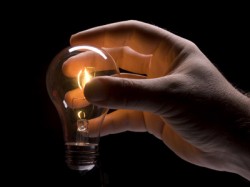Thomas Edison’s electric light bulb, that is, the incandescent light bulb, has been in existence for over one hundred years. In fact, the availability of electric light changed how lighting home interiors and exteriors, and various other locations, were illuminated in the United States and other parts of the world.
In the United States, watts has tended to be the unit of measurement printed on light bulb labels to represent how bright the bulb shines when lit. However, the label information that will be provided on light bulb packaging is being modified. In the year 2011, light bulb labeling packaging will emphasize how bright the light bulb shines in lumens instead of watts when lit, as reported by The United States Federal Trade Commission. Watts is a measure of energy usage and lumens is a measure of brightness.
In the past, with incandescent light bulbs, watts tended to give an indication to consumers of how bright a light bulb would shine. The higher the wattage, the brighter the bulb would illuminate. Today, energy efficient light bulbs provide more light while consuming less energy. To illustrate this fact, 840 lumens is provided by a typical 60 watt incandescent light bulb. However, while only consuming 13 watts, an energy efficient compact fluorescent light bulb provides 900 lumens. Fewer watts are used by the energy efficient compact fluorescent while providing more lumens than the 60 watt incandescent. Therefore, watts is no longer necessarily an accurate measure of how bright a light bulb will shine. Lumens is a more accurate measure of how bright a light bulb will illuminate.
Before energy efficient light was available, shoppers used to consider the wattage of the bulb, among possibly other light bulb qualities. It is true that watts is a term commonly known among consumers in the Untied States, and less well known is the term lumens, although with the upcoming changes to label packaging, lumens is destined to also become a familiar household term.
The options for home lighting are evolving, as time progresses and technologies advance. As a consequence, the need to provide more accurate labeling of light bulbs has arisen to reflect a more accurate representation of light bulb brightness as well as marketplace changes.

















